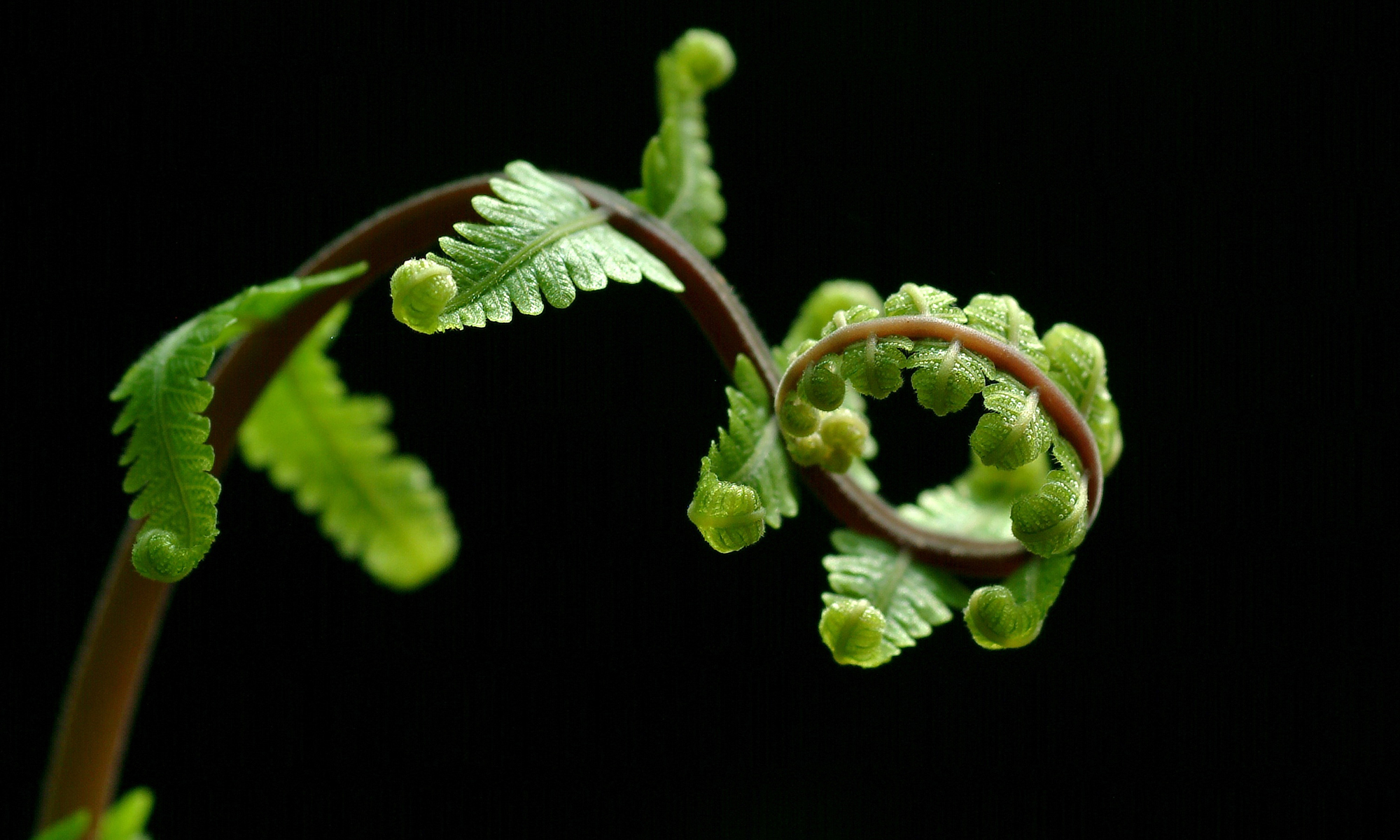Leaf development in ferns
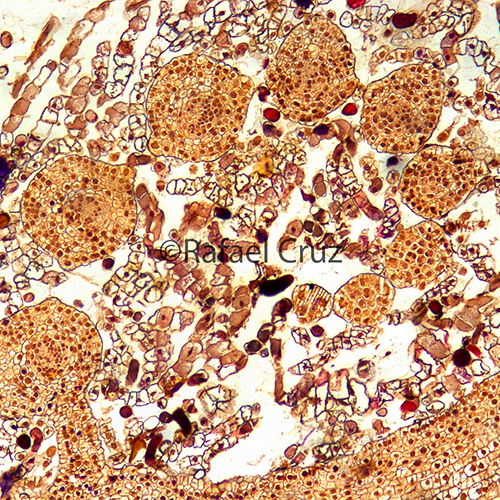
Flattened photosynthesizing structures are a recurrent solution to maximize light capture in many groups during their evolution. We still do not know if leaves, as they are called in vascular plants, appeared once or more times in the history of the group, although they probably are a system of modified branches. Ontogeny can be particularly useful to reveal possibilities concerning the past of plant structures, and scientists have already been finding important data for leaf development in seed plants. Although these new data keep growing each day, we still need to discover more about ontogeny in seed-free plants. Ferns occupy a key phylogenetic position within vascular plants, with very particular features in their leaves, as a strong similarity with spermatophytes branches (e.g. apical meristems and axial growth with lateral structures). Together with my collaborators, we unite plant anatomy and gene expression of different and specialized growth regions to better understand how they are built and how they have evolved.
Main collaborators:
Alejandra Vasco (Botanical Research Institute of Texas)
Barbara A. Ambrose (New York Botanical Garden)
Gladys Flávia A. Melo-de-Pinna (University of São Paulo)
Jefferson Prado (São Paulo State University)
Main subareas:
Plant anatomy (histology, light microscopy)
Molecular biology (gene expression, in situ hybridization, gene trees, qRT-PCR)
Evolution of leaves in Sapindales
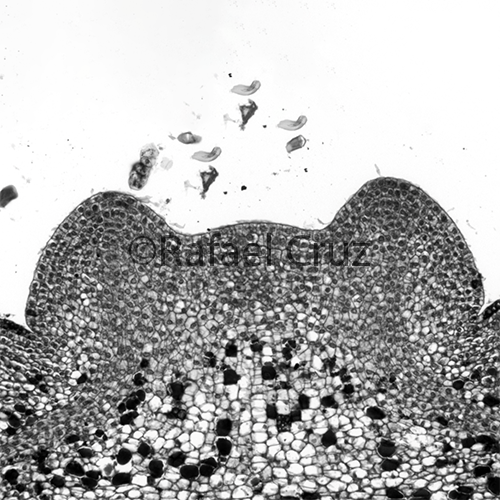
The ancestral of angiosperm likely had simple leaves (i.e., leaves with undivided blade), as known through fossil records and phylogenetic data. Compound leaves (i.e., leaves divided into sub-unities called leaflets) arose several times in angiosperms independently. The ancestor of the order Sapindales, for example, is likely to have had compound leaves. However, within this order, several members evolved the undivided morphology again and other unusual structures. This project aims to understand the development of some of these structures, like terminal buds (in Meliaceae, the mahogany family), and unifoliolate leaves, that have a single leaflet articulated with its base and can be interpreted either as simple or compound leaves (in Rutaceae, the lime and rue family).
Main collaborators:
Gladys Flávia A. Melo-de-Pinna (University of São Paulo)
José Rubens Pirani (University of São Paulo)
Main subareas:
Plant anatomy (histology; light and electron microscopy)
Plant phylogeny (MP, ML, and BA phylogenetic trees; reconstruction of ancestral character states)
Evolution of cuticle structure in hornworts
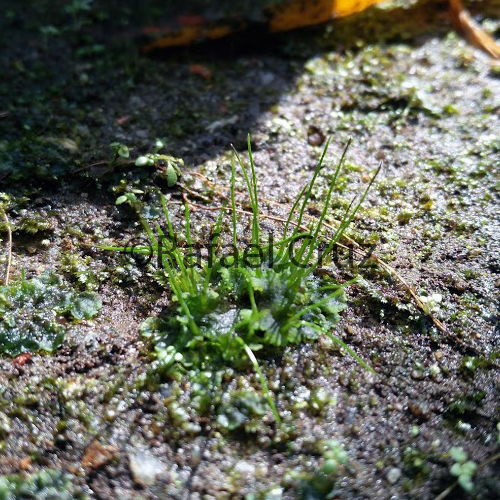
Hornworts are an exquisite group of land plants that lack vascular tissues and present well distinct sporophytes and gametophytes. Their phylogenetic position, however, is still unknown and several studies tell us different evolutionary possibilities. We are studying the cuticular wax structure and composition in the group in order to gather more information about their homologies with land plants and other bryophytic plants.
Main collaborators:
Deborah Yara Alves Cursino dos Santos (University of São Paulo)
Tamara Machado Matos (University of São Paulo)
Main subareas:
Plant anatomy (histology, histochemistry, electron microscopy)
Phytochemistry
Evolution of root anatomy in Pleurothallidinae (Orchidaceae)
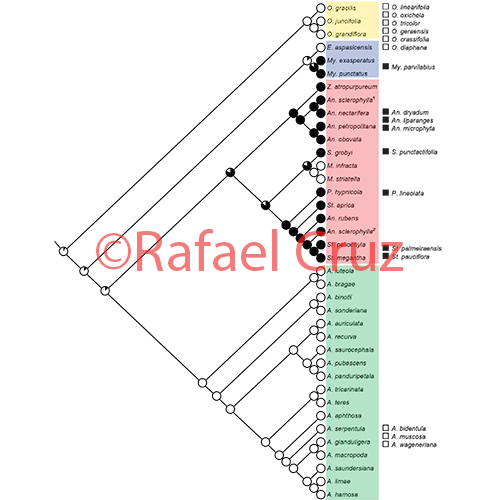
Pleurothallidinae is the largest subtribe of Neotropical orchids. Before they were placed in other genera, many species of Pleurothallidinae were formerly part of the megagenus Pleurothallis R. Br., which had received more than 2000 specific epithets. Phylogenetic and taxonomic studies reintegrated and restated some old genera, like Acianthera Scheidweiler, Anathallis Barbosa Rodrigues, Pabstiella Brieger & Senghas, and Specklinia Lindley. However, despite several attempts, the genera delimitation is not clear and studies with the distribution of macro and micromorphological features of these genera are still insufficient, leading to the classification of a single species in several genera by different authors. In this project, we are describing the root anatomy of Brazilian Pleurothallidinae in a phylogenetic context to provide useful characters for the classification of different genera of the group; and to better understand the evolution of these characters.
Main collaborators:
Ana Cláudia Rodrigues (Federal University of Santa Catarina)
Fernanda Maria Cordeiro de Oliveira (Federal University of Santa Catarina)
Main subareas:
Plant anatomy (histology; light and electron microscopy)
Plant phylogeny (ML and BA phylogenetic trees; reconstruction of ancestral character state)
Anato Encontros

Plant anatomy is an integrative part of Botany and has been used to answer several questions during centuries. However, in several places, this area has been disappearing while new scientists are dedicating their efforts to other types of analysis. Brazil is one of the last refuges where several anatomists are still resisting, uniting classical and modern techniques together with collaborators from all around the world to contribute to different fields. Anato Encontros is an idea that arose with the intuition to unite Brazil’s anatomists. We organize weekly talks, in Portuguese and online, in order to bring together anatomists from different regions of our country. You can check previous talks on our YouTube channel.
Main collaborators:
Bruno Edson Chaves (Ceará State University)
Gladys Flávia A. Melo-de-Pinna (University of São Paulo)
Priscila Andressa Cortez (Federal University of São Paulo)
Main subareas:
Plant anatomy
Scientific divulgation
